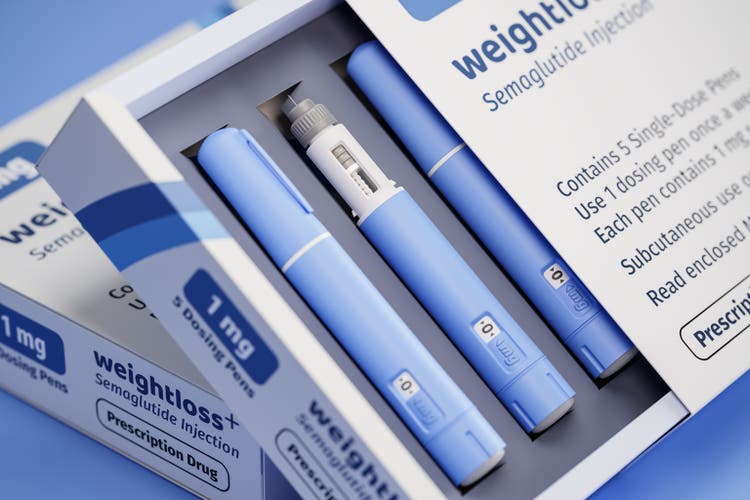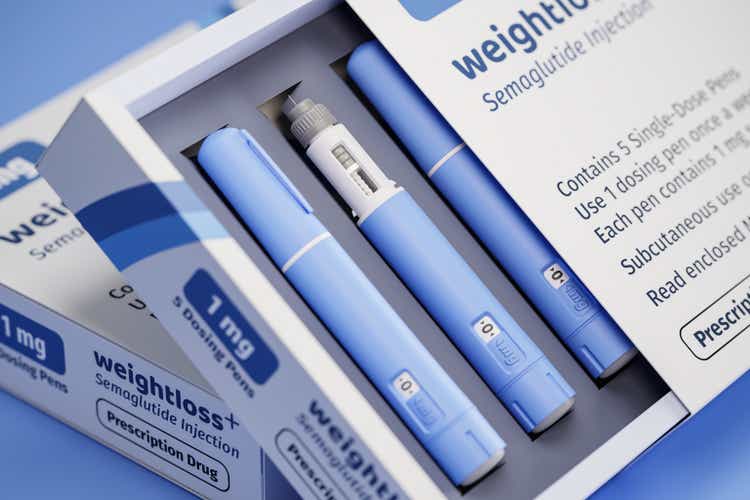
aprott
The bloom may be off the rose for obesity drugs as reports of side effects for high doses of GLP-1 drugs.
GLP-1s were originally designed to treat diabetes, but showed effectiveness in weigh loss. The space is currently dominated by Eli Lilly (NYSE:LLY), which makes Zepbound and Mounjaro, and Novo Nordisk (NVO), with Ozempic and Wegovy.
The success of the drugs has helped shares of both companies. NVO is up more than 40% in the past year and LLY is up more than 50%. Both stocks are not far from 52-week highs.
But the Financial Times reported a recent Roche (OTCQX:RHHBY) study showed “high rates of vomiting and other side effects among those who took strong doses of the drugs.”
Three of four patients on the highest dose of the CT-388 injection experienced vomiting, while the oral pill showed similar side-effects, the FT said. It added that 30% of GLP-1 users stopped within four weeks of taking the drugs, with many citing side effects, according to Blue Health Intelligence.
The popularity of the drugs has resulted in a race to enter the market. Up to 16 new GLP-1 drugs could be launched by 2029, eventually taking nearly a third of a potential $200B market by 2031, according to a report by Morningstar and Pitchbook.
Other players in the weight-loss space include Amgen (AMGN), Pfizer (PFE), AstraZeneca (AZN), Viking Therapeutics (VKTX) and Structure Therapeutics (GPCR), while Merck (MRK) and J&J (JNJ) are potential suitors for a GLP-1 developer.
